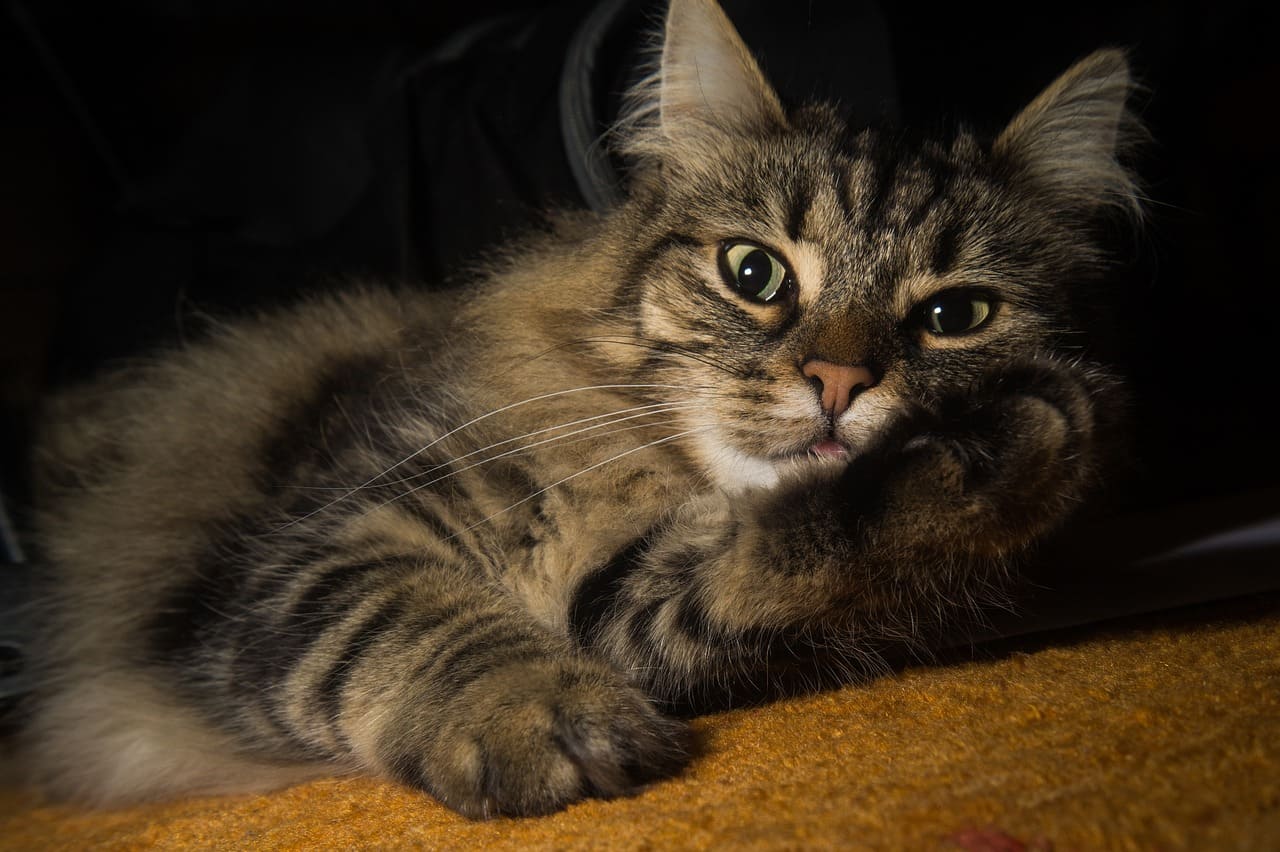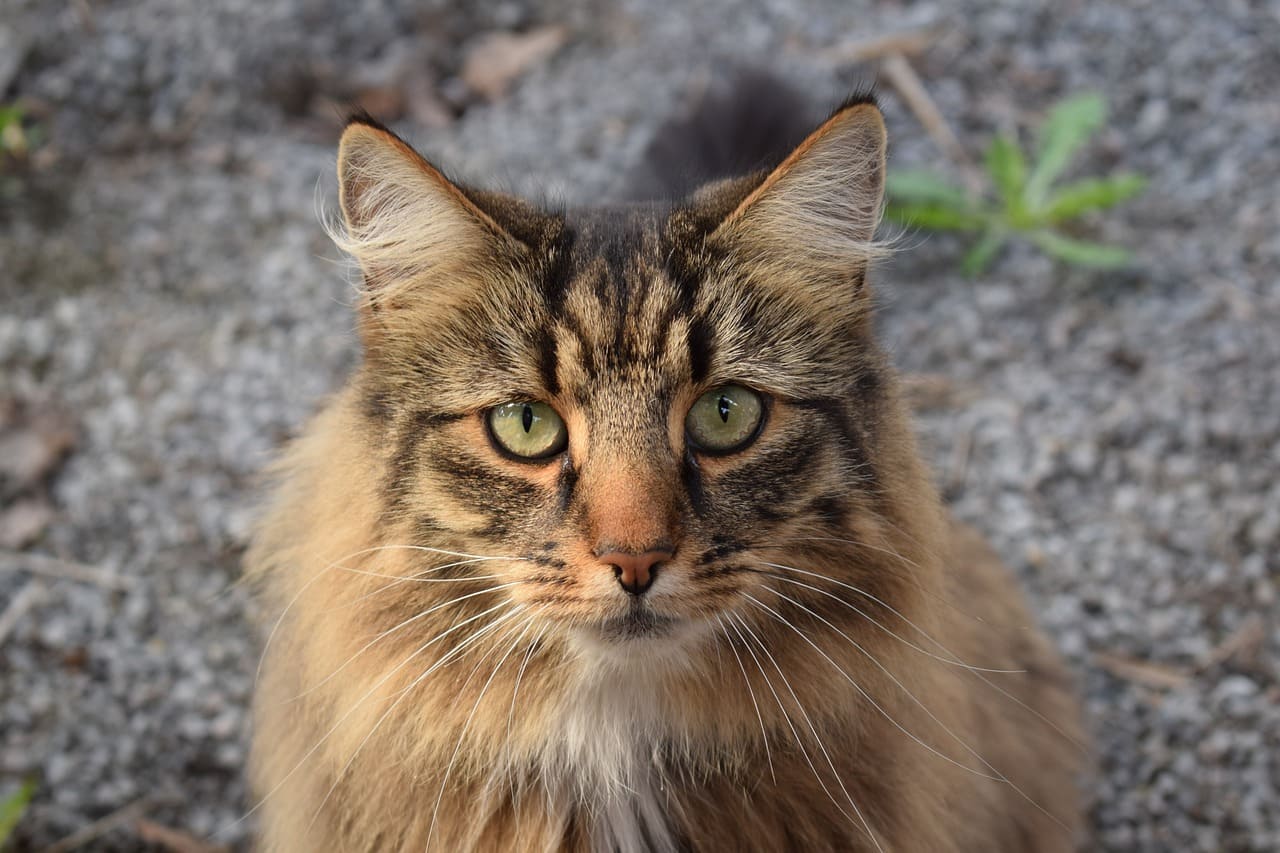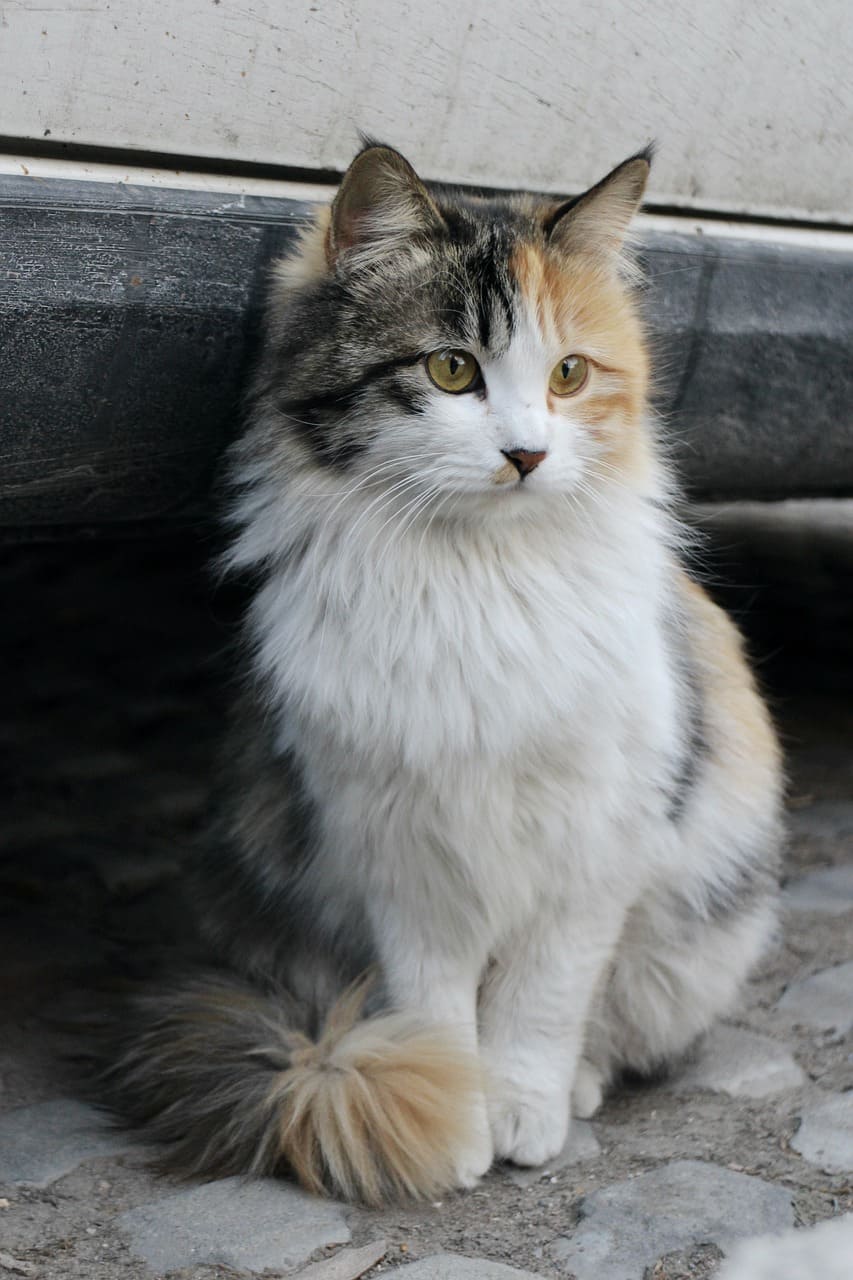The Norwegian Forest Cat, often referred to as the “Wegie” for short, is a breed known for its striking appearance, robust physique, and captivating personality. Hailing from the Nordic forests of Norway, this breed has a history intertwined with folklore and mythology, making it a breed of intrigue. In this comprehensive article, we will delve into the history, physical characteristics, temperament, care requirements, and more about the Norwegian Forest Cat breed.
History and Origins

The Norwegian Forest Cat’s history is a blend of legend and fact, as it is steeped in Nordic folklore. The breed is believed to have existed for centuries, with origins dating back to the Viking era. Here’s a glimpse into the history of the Norwegian Forest Cat:
Viking Companions
The Norwegian Forest Cat is thought to have been the companion of Vikings as they explored and traded throughout Europe. These cats were valuable for their hunting skills, which helped control the rodent population on Viking ships and in their settlements.
Norse Mythology
In Norse mythology, the Norwegian Forest Cat is associated with the goddess Freyja. Freyja was the goddess of love, beauty, and fertility, and she was often depicted with a chariot drawn by two large, powerful cats. These cats were believed to be Norwegian Forest Cats, emphasizing their importance in Norse culture.
Natural Adaptation
Over centuries, the Norwegian Forest Cat adapted to the harsh climate of Norway. Their strong and waterproof double coat, tufted ears, and long, bushy tail helped them survive in the cold and snowy Nordic forests.
Despite their long history, the Norwegian Forest Cat wasn’t officially recognized as a breed until the 20th century. It gained international recognition, and its breed standards were established in the 1970s. Today, it is celebrated as a distinct and cherished breed by cat enthusiasts worldwide.
Physical Characteristics
The Norwegian Forest Cat boasts a distinctive and regal appearance, characterized by its size, luxurious coat, and other unique features. Here are the key physical characteristics of the Norwegian Forest Cat breed:
Coat
The Norwegian Forest Cat’s coat is dense, water-resistant, and comes in various colors and patterns. It has a double coat, with a soft and insulating undercoat and a longer, coarser topcoat. The coat becomes particularly lush during the winter months and is accompanied by a prominent ruff around the neck.
Body Type
Norwegian Forest Cats are large and well-muscled with a sturdy bone structure. They have a rectangular body shape with strong legs and paws. Their paws are large, tufted, and equipped with extra fur between the toes to aid in walking on snow.
Head and Face
The head of a Norwegian Forest Cat is triangular with a straight profile and a strong chin. Their ears are medium-sized, pointed, and have lynx-like tufts on the tips. Their eyes are large and almond-shaped, and they come in various colors, including green, gold, and copper.
Size and Weight
Norwegian Forest Cats are notably large, with males typically weighing between 13 to 22 pounds (5.9 to 10 kg) and females ranging from 8 to 16 pounds (3.6 to 7.3 kg). Their size and weight are in proportion to their muscular and substantial body type.
Temperament and Personality
The Norwegian Forest Cat is celebrated for its friendly, gentle, and sociable personality. These cats are known for their affectionate disposition and adaptable nature. Here are some key characteristics of their temperament:
Friendly
Norwegian Forest Cats are highly sociable and enjoy being part of the family. They are known for their friendly and approachable demeanor and may greet visitors with a welcoming attitude.
Playful
These cats have a playful spirit and maintain their kitten-like demeanor well into adulthood. They enjoy interactive toys, games, and activities that stimulate their minds and keep them physically fit.
Vocal
While not as vocal as some other breeds, Norwegian Forest Cats may engage in soft and melodic meows and trills to communicate their needs or desires. They are known for their gentle and sweet vocalizations.
Intelligent
Norwegian Forest Cats are intelligent and quick learners. They enjoy problem-solving activities and interactive toys that challenge their minds. Their adaptability makes them suitable for various living situations.
Social
These cats are highly social and often get along well with other pets, making them a suitable choice for multi-pet households. They thrive on companionship and enjoy being with their human family members.
Loyal
Norwegian Forest Cats form strong bonds with their owners and are known for their loyalty. They are often seen as loyal and devoted companions.
Energetic
Norwegian Forest Cats have bursts of energy and enjoy play sessions and activities that allow them to express their natural agility. They benefit from regular exercise to keep them physically and mentally fit.
Care and Maintenance

Taking care of a Norwegian Forest Cat involves providing proper nutrition, grooming, and regular veterinary care. Here are some key considerations for maintaining their health and well-being:
Diet
A high-quality cat food is essential for Norwegian Forest Cats. They should be fed a balanced diet that provides the necessary nutrients for their specific life stage, whether it’s kitten, adult, or senior. Consult with your veterinarian to determine the right type and amount of food for your cat.
Grooming
Norwegian Forest Cats have a dense and long coat that requires regular grooming. Regular brushing is recommended, particularly during the shedding seasons, to prevent matting and maintain their coat in optimal condition. Pay special attention to their ruff, the stomach, and the hindquarters. Their ear cleaning and dental care should also be part of their grooming routine.
Health
Norwegian Forest Cats are generally healthy cats, but regular veterinary check-ups are crucial for monitoring their overall health and addressing any potential issues. Common health concerns for the breed may include hip dysplasia, hypertrophic cardiomyopathy (a heart condition), and certain hereditary conditions. Weight management and dental care are important components of their overall health maintenance.
Exercise
Norwegian Forest Cats have a playful and active nature and enjoy regular exercise. Interactive toys, feather wands, and play sessions can keep them physically and mentally fit. Providing opportunities for climbing and exploring, such as cat trees and shelves, can satisfy their love for high perches.
Litter Box
Ensure that your Norwegian Forest Cat has access to a clean and easily accessible litter box. Regular cleaning and scooping are necessary to ensure their hygiene and prevent any litter box aversions.
Safety
Norwegian Forest Cats are inquisitive and may explore their surroundings. Ensure your home is safe by removing potential hazards, securing toxic substances, and providing appropriate climbing and perching spots to satisfy their natural instincts.
Common Myths and Misconceptions
There are some myths and misconceptions about Norwegian Forest Cats that should be addressed:
Myth: Norwegian Forest Cats are aloof and independent.
Reality: Norwegian Forest Cats are known for their friendly and sociable nature. They enjoy human companionship and are far from aloof.
Myth: Norwegian Forest Cats are not suitable for small living spaces.
Reality: While Norwegian Forest Cats are large, they can adapt to smaller living spaces as long as they have ample exercise and play opportunities. They are not exclusively suited for large homes.
Myth: Norwegian Forest Cats are descendants of the Maine Coon.
Reality: Norwegian Forest Cats and Maine Coon cats are separate breeds with distinct histories and characteristics. They may share some physical similarities but are not directly related.
Breeding and Genetics
Breeding Norwegian Forest Cats involves adhering to specific breeding standards to maintain the breed’s unique appearance and temperament. To produce purebred Norwegian Forest Cats, breeders focus on preserving the breed’s characteristics. Here are some key points about breeding and genetics:
Coat Color and Pattern
Norwegian Forest Cats have a wide variety of coat colors and patterns, including solids, tabby, and more. Breeders select for cats with the desired coat color and pattern to ensure the breed’s unique appearance.
Breeding Standards
Reputable breeders adhere to strict breeding standards to preserve the breed’s integrity. This includes ensuring that the kittens have the correct coat color, pattern, and physical characteristics, such as the large size and distinctive ears. Breeding for health and temperament is also a priority.
Registration
Norwegian Forest Cats are recognized by various cat associations, including The International Cat Association (TICA) and the Cat Fanciers’ Association (CFA). To register a Norwegian Forest Cat with these organizations, breeders must adhere to their breeding and registration requirements.
Health Testing
Responsible breeders conduct health testing to screen for genetic disorders that can affect Norwegian Forest Cats, such as hip dysplasia and hypertrophic cardiomyopathy. This helps ensure the health and well-being of the kittens and their future owners.
Finding a Norwegian Forest Cat
If you’re interested in adding a Norwegian Forest Cat to your family, there are several options for finding one:
Reputable Breeders
Contacting a reputable breeder is one of the best ways to acquire a purebred Norwegian Forest Cat. Look for breeders who are registered with cat associations, follow ethical breeding practices, and prioritize the health and well-being of their cats.
Rescue Organizations
You can also consider adopting a Norwegian Forest Cat from a rescue organization or shelter. While purebred Norwegian Forest Cats may be less common in rescues, it’s possible to find a cat with Norwegian Forest Cat characteristics in need of a loving home.
Cat Shows
Attending cat shows and expos can be a great way to meet breeders, see Norwegian Forest Cats in person, and learn more about the breed. It’s also an opportunity to ask questions and gather information about potential breeders.
Conclusion

The Norwegian Forest Cat, with its robust physique, friendly disposition, and captivating history, has earned its place as a cherished and enigmatic breed. Whether you acquire one through a reputable breeder or choose to adopt from a rescue, a Norwegian Forest Cat is sure to bring warmth and charm to your home. Their affectionate and sociable nature makes them wonderful companions, and their strong and regal appearance has endeared them to cat enthusiasts worldwide.
